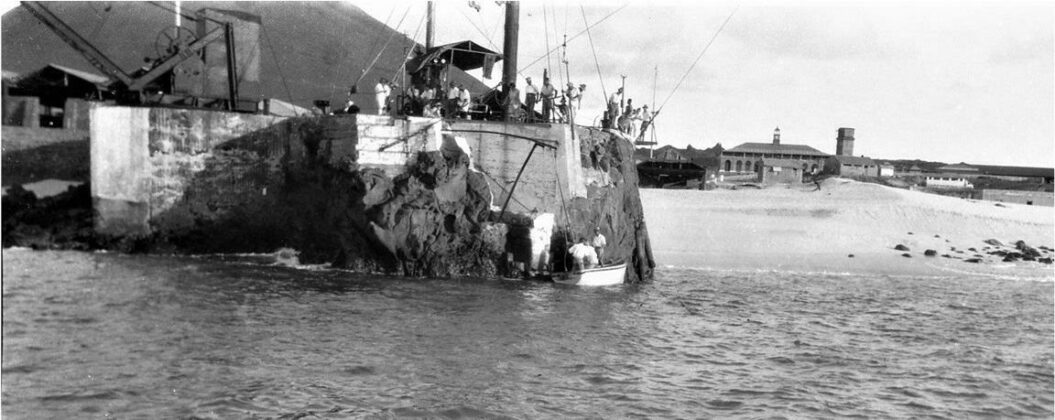
Dive deeper
The sea is a constant presence in the lives of everyone living on Ascension
so it is not surprising that it plays a crucial role in the identity and culture of the island. In interviews and questionnaires conducted in 2019, the majority of people surveyed named the sea and coast when asked to describe the ‘essence’ of Ascension (Canelas et al. 2019). Fishing is a popular pastime of many people living on Ascension Island and the beaches and pier are important locations for social gatherings and community cohesion.
Many of the people living on Ascension Island come from St Helena and until 2018 the main route home was the RMS St Helena that would travel between the islands every six weeks. The three day journey across 700km of ocean that now includes both the Ascension and St Helena MPAs was a lively affair with plenty of eating, drinking and skittles. Though this has now been replaced by an airlink, for many people the idea of home still lies across the ocean.
The history of Ascension Island is also closely bound to the ocean. Ascension was discovered by a Portuguese sailor in 1501 and for the following centuries most visitors were mariners looking for safety and fresh meat. Notable explorers such as William Dampier, James Cook and Charles Darwin all called at Ascension Island and early maps show an ocean teaming with life. That sense of a remote outpost providing comfort to weary travellers continues to this day and there is a culture of helping those in need that has come to the aid of many merchant sailors and transatlantic yachtspeople in recent years.

Between the first permanent settlement of the island in 1815 and 1922, Ascension Island was governed by the Royal Navy and in legal terms was considered to be a vessel - ‘HMS Ascension.’ The island was first garrisoned to ensure no attempt was made to rescue Napoleon from his exile in St Helena and later played a key role as a base for ships patrolling the African coast to enforce the British anti-slavery policy. Ascension’s strategic location in the centre of the Atlantic Ocean also became important for the communications industry with the arrival of the transatlantic undersea cable in 1899. To this day, those twin roles of a military base and communications hub employ most people on Ascension. Being a remote island in the middle of the ocean is Ascension’s greatest challenge and its most valuable asset. The creation of the MPA and the opportunity it offers for research into marine ecosystems could be the next step in realising the potential of the island.
Physical reminders of the past still present on the island. There are seven known wrecks around the coast of the island and additional sites where other objects have been discovered. The Ascension Island Heritage Society holds records of these sites and many artefacts have been recovered and preserved in the Museum at Georgetown including the bell from Dampier’s H.M.S. Roebuck that sank in Clarence Bay in 1701. Some of the most celebrated wrecks are described below.
Wrecks
S.V. Abyssinian/China Wreck
07° 55.20l S, 014° 25.470 W
Depth: Approximately 17m
An iron sailing ship that was named locally for the cargo of Chinese export porcelain it carried. The cargo has been dated to the Ch’ing dynasty, manufactured during the reign of Tao Kuang, 1821-1850. The wreck is probably the S.V. Abyssinian, which arrived taking on water at Ascension 16 May 1856. After attempts were made to pump it out and some of the cargo offloaded, the ship’s master abandoned her to her fate.
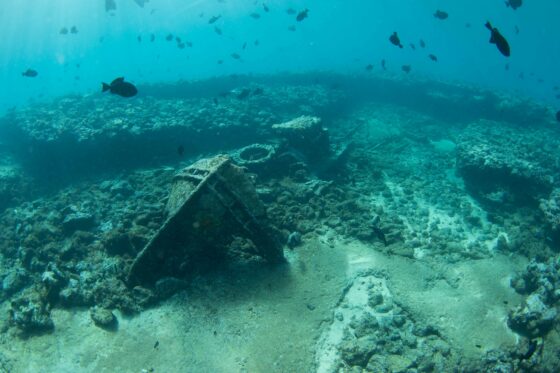
M.V. Derby
07° 53.514 S, 014° 22.883 W
Depth: Approximately 10m
A steel hulled fishing trawler that arrived at Ascension in November 1923. It was used by the English Bay Company to transport guano from Boatswain Bird Island but was sunk by heavy rollers in January 1929.
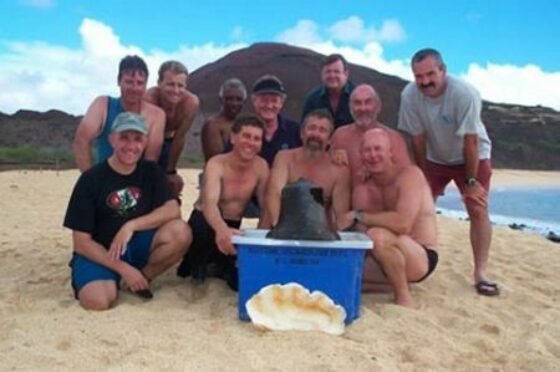
H.M.S. Roebuck
Clarence Bay
The renowned explorer William Dampier was shipwrecked on Ascension Island when his ship the H.M.S. Roebuck sprang a leak and sank on 25 February 1701 in Clarence Bay. Artefacts were recovered in 2001 by an expedition sponsored by the University of Western Australia. Local diver Jimmy Young was instrumental in locating the wreck and recovery of the artefacts now on display in the island museum.
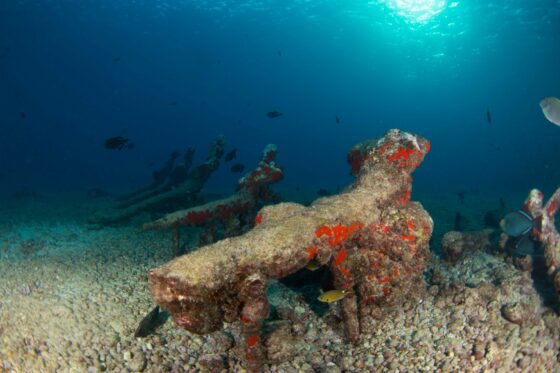
H.M.S. Maeander
07° 54.450 S, 014° 24.340 W
Depth: Approximately 14m
A Royal Navy Seringapatam-class frigate of the West Africa Squadron that was wrecked in a gale in 1870. From 1848 to 1850 she served on the Pacific Station and was in the White Sea in 1855. In 1860 she was converted into a stores ship and served at Ascension as a replacement for HMS Tortoise..
Other sites
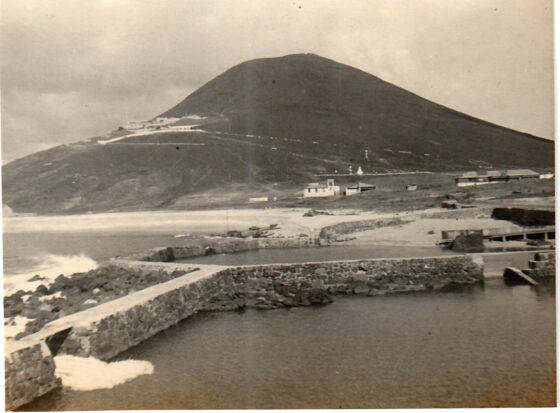
Turtle Ponds
The Turtle Ponds were built in the 19th century to provide a captive source of turtle meat for visiting vessels. The ponds found a new use in the 20th century as a safe place for Saint Helenian children, who were banned from the whites-only pool, to learn to swim. They have a special place in the hearts of many St Helenians living on Ascension and are now protected as an Area of Historical Interest that have been restored as a community leisure space.
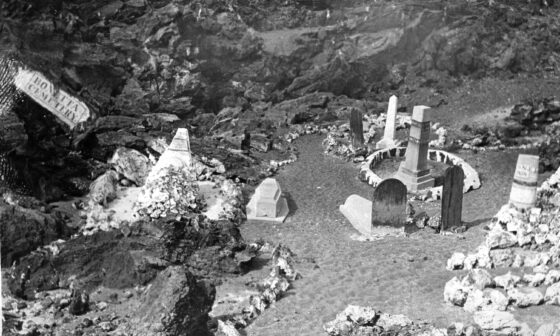
Comfortless Cove
Small cemeteries are present around the island, the most poignant of which are those behind Comfortless Cove. It is here that ships would bring their sick and dying and, though some provisions of food and water would be left and later hospital facilities provided, many young sailors succumbed to diseases such as yellow fever and influenza.
Comfortless Cove was also the site where the Transatlantic Cable was brought ashore in 1899. The Eastern Telegraph Company’s cable termination hut still stands at the back of the beach and the cable can be seen 10m offshore. From here cables were laid to offices in Georgetown and Ascension became part of a network connecting Africa, the UK and South America.
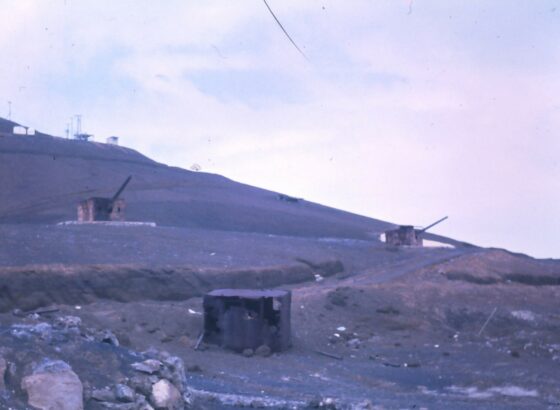
Guns of HMS Hood
Though it has provided an important staging post and communications hub during many conflicts, Ascension itself has seen little action. The island has been fortified against attack since the early days of settlement but the guns were almost never fired in anger. The exception came during the Second World War. Ascension had been sent two 5.5 inch guns taken from HMS Hood during an earlier refit. The Hood was famously sunk by the German battleship Bismarck with the loss of over 1400 men and the guns on Ascension are the only surviving part of the ship. They were fired on one occasion on 9th December 1941 to repel the attack of U-boat U-124. The guns can now be seen on Cross Hill overlooking Georgetown.